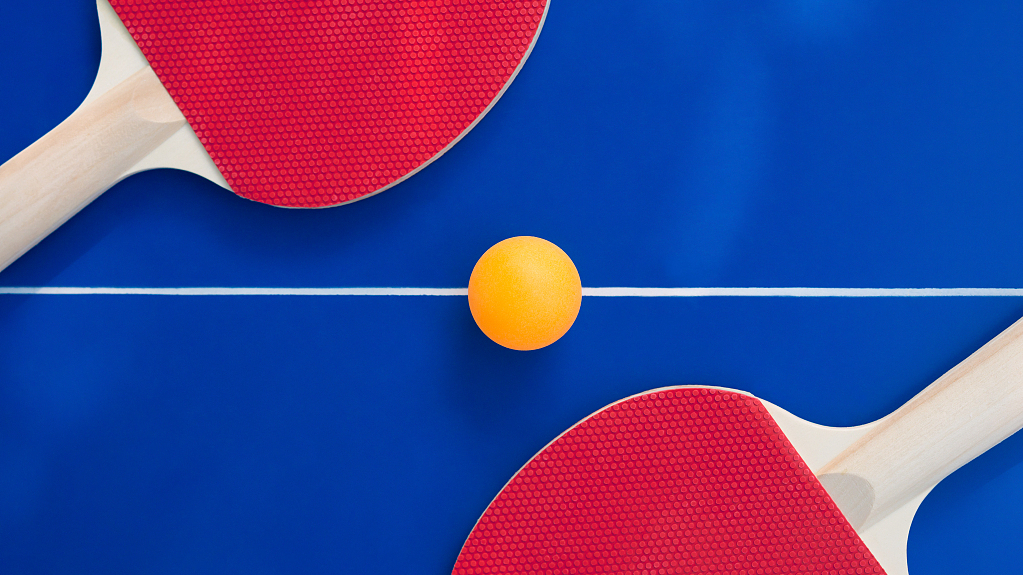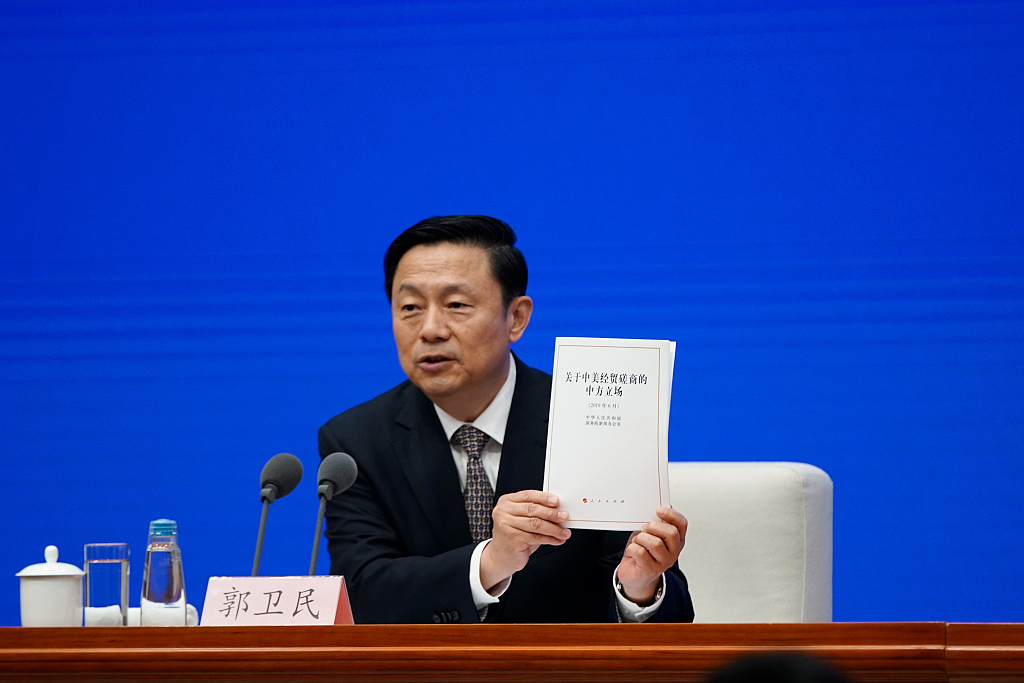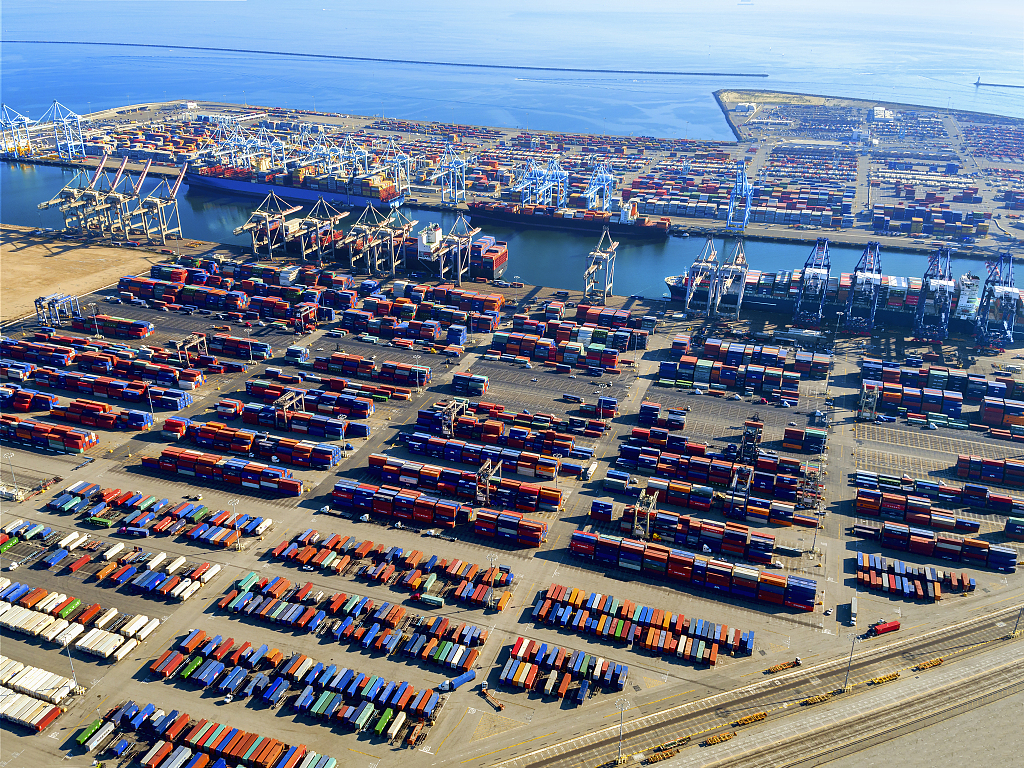

Editor's note: The author, who has a doctoral degree in communications from the Communication University of China, has been specializing in international journalism for 30 years. The article reflects the author's opinion, and not necessarily the views of CGTN.
Now, let’s take a look at how the China-U.S. trade disputes got started. Due to various factors, China has maintained a trade surplus with the U.S. since it joined the WTO at the turn of the century. The two countries had been trying to settle the problems through the WTO over the years until Donald Trump became the president of the United States. Trump thought he could quickly fix the deficit problem by levying taxes on Chinese goods by acting as both the coach for the American team and the referee for the competition.
When the trumpeted tariffs failed to reduce the trade imbalance between the countries, – according to the American press, the U.S. trade deficit with China reached 420 billion U.S. dollars in 2018, a 12-percent increase over the previous year. President Trump agreed to suspend the tariffs when he met with Chinese President Xi Jinping during the G20 Summit in Argentina so that the two countries could sort things out through negotiations. The Buenos Aires Summit paved the way for five months of talks aimed at ending the China-U.S. trade disputes.
However, President Trump was not patient enough to wait for the negotiating teams to reach an agreement, or maybe he was not waiting for a negotiated agreement at all due to his political agenda to campaign for a second term in the White House. He suddenly announced the launch of new tariffs on Chinese imports in mid-May when the Chinese negotiating team led by Vice Premier Liu He arrived in Washington for the 11th round of trade talks. His announcement was viewed as a tactic to force China to accept his terms of an agreement.

Guo Weimin, deputy director of China's State Council Information Office, introduces the White Paper during a press conference, June 2, 2019. /VCG Photo
With trade disputes between China and the United States dragging on into the second year, people are wondering why a common trade issue has turned into an irrational escalation of conflicts between the world’s two largest countries: one is the largest developed country and the sole superpower, the other the largest developing country and an emerging economy. Well, I think we can better understand the problem by a brief case study of a sports event, ping-pong or table tennis, and the World Trade Organization (WTO).
Table tennis originated in England during the late 19th century. In the early 20th century, it became popular in the U.S., and an American even used Ping-Pong as the brand for his product. When ping-pong was introduced into China, it soon became a "national game." Chinese players dominated the sport in international competitions during the 60s and 70s.
Then, the International Table Tennis Federation (ITTF) adopted specific rules about the specifications of the bats and balls, and even about the body positions of the players when they serve, aiming to break the Chinese players’ dominance of the event. In the meantime, besides actively adapting the new rules, China started cooperating with other countries via personnel exchanges, allowing Chinese players to play or serve as coaches in other countries. Thanks to these measures, the level of ping-pong has been enhanced worldwide
The WTO has played a similar role as the ITTF does in international trade. Over the past decades, all WTO members have followed the rules and regulations to settle complaints or disputes resulting from trade with each other. The procedure is more or less like the ping-pong game: the trading companies are the players, the governments are the coaches for their countries' companies, the WTO case-specific panels serve as referees to oversee the games and the WTO Dispute Settlement Body (DSB) is the place to hear and settle complaints about breaches of rules by players, coaches or referees. If a WTO member is not happy about the rules and regulations, it can initiate an amendment via the WTO Ministerial Conference.

VCG Photo
Actually, it was more than that. This time, in addition to being coach for the American team and referee for the game, Trump was trying to play the role of coach of the Chinese team as well. Among other things, Trump wants China to commit to purchase of certain categories of American goods – in an effort to influence what goods China buys and from whom.
He also demands China make sweeping changes to its trade and regulatory practices, including cutting government subsidies and providing wider market access to U.S. firms. Washington has often accused Beijing of manipulating the market, but as a matter of fact, the White House is the biggest manipulator, aiming to control both domestic and foreign markets. All these measures are designed to achieve a deal that "has to be more in favor of the United States."
When the Chinese side refused to give in, Trump took another step to further escalate the conflicts by signing an executive order to ban Huawei, the Chinese giant telecommunication company, from doing business with American companies out of "security concerns."
The most recent statement on the issue from Trump is that he would raise more tariffs on Chinese imports if President Xi Jinping does not meet with him at the upcoming G20 Summit in Japan. Although Trump has put forward various justifications for his decisions, his real motivation is in his own words "I don’t want them (Chinese) to do as well as us."
The result might be desirable temporarily for Trump, but whether it’s a feasible solution to the problems, let’s wait and see.
(If you want to contribute and have specific expertise, please contact us at opinions@cgtn.com.)

Copyright © 2018 CGTN. Beijing ICP prepared NO.16065310-3
Copyright © 2018 CGTN. Beijing ICP prepared NO.16065310-3